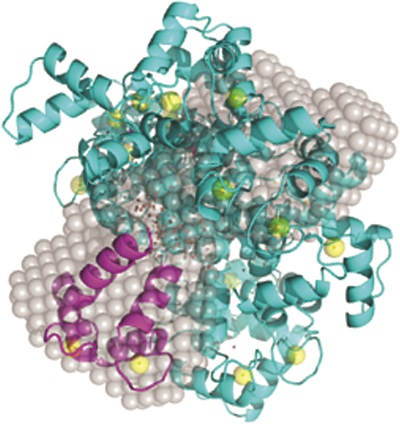Publication guidelines for biomolecular small-angle scattering
 Small-angle
scattering continues to increase in popularity for structure biology studies.
The technique can provide structural information that is both accurate and
precise and, especially when used in combination with other complementary data,
of considerable value for studying individual molecules, complexes and
assemblies. However, without stringent attention to data quality and model
validation, there is significant potential for over-interpretation or even for
being misled.
Small-angle
scattering continues to increase in popularity for structure biology studies.
The technique can provide structural information that is both accurate and
precise and, especially when used in combination with other complementary data,
of considerable value for studying individual molecules, complexes and
assemblies. However, without stringent attention to data quality and model
validation, there is significant potential for over-interpretation or even for
being misled.
In 2012 preliminary guidelines were published addressing sample quality, data acquisition and reduction, presentation of scattering data and modelling, and data and model validation for biomolecular small-angle scattering (SAS) experiments. These guidelines aimed to establish a standard reporting framework that would aid in providing experimenters, reviewers and readers with confidence in the results being presented. Authors have increasingly adopted the preliminary guidelines. As biomolecular SAS has continued to grow, new methods and innovations have emerged. In parallel, integrative/hybrid determination of biomolecular structures is a rapidly growing field that is expanding the scope of structural biology. For SAS to contribute maximally to this field, it is essential to ensure open access to all of the information required for evaluation of the quality of SAS samples and data, as well as the validity of SAS-based structural models. To this end, reviewed and updated guidelines have been published [see Trewhella et al. (2017), Acta Cryst. D73, 710-728; doi:10.1107/S2059798317011597], and the deposition of data and associated models in a public archive has been recommended. These guidelines and recommendations have been prepared in consultation with the members of the International Union of Crystallography (IUCr) Small-Angle Scattering and Journals Commissions, the Worldwide Protein Data Bank (wwPDB) Small-Angle Scattering Validation Task Force and additional experts in the field.
By using the guidelines, authors publishing structural biology studies using small-angle scattering (SAXS or SANS) will ensure that their readers understand the quality of their data and the validity of the models presented. The paper above provides an explanation for the relevance of the recommended guidelines as well as example data sets and modelling approaches.
To help authors further, IUCr Journals have now updated their Word template to include SAS data tables. To access these just tick the box next to "include SAS data" when opening the template or, once it is open, go to table tools to get a blank table template to fill in. Also, if the structure is deposited in the Small Angle Scattering Biological Data Bank (SASBDB) there is the option to input the database ID and the data will be fetched and included in the table automatically. The IUCr online authoring tool publBio (publBio.iucr.org) has also been updated for SAS data where there are also options to use a blank template or include your data automatically.
We look forward to continued interest and growth in biomolecular SAS, and hope that these guidelines, and the IUCr publication tools now available, help authors publish their results successfully.

